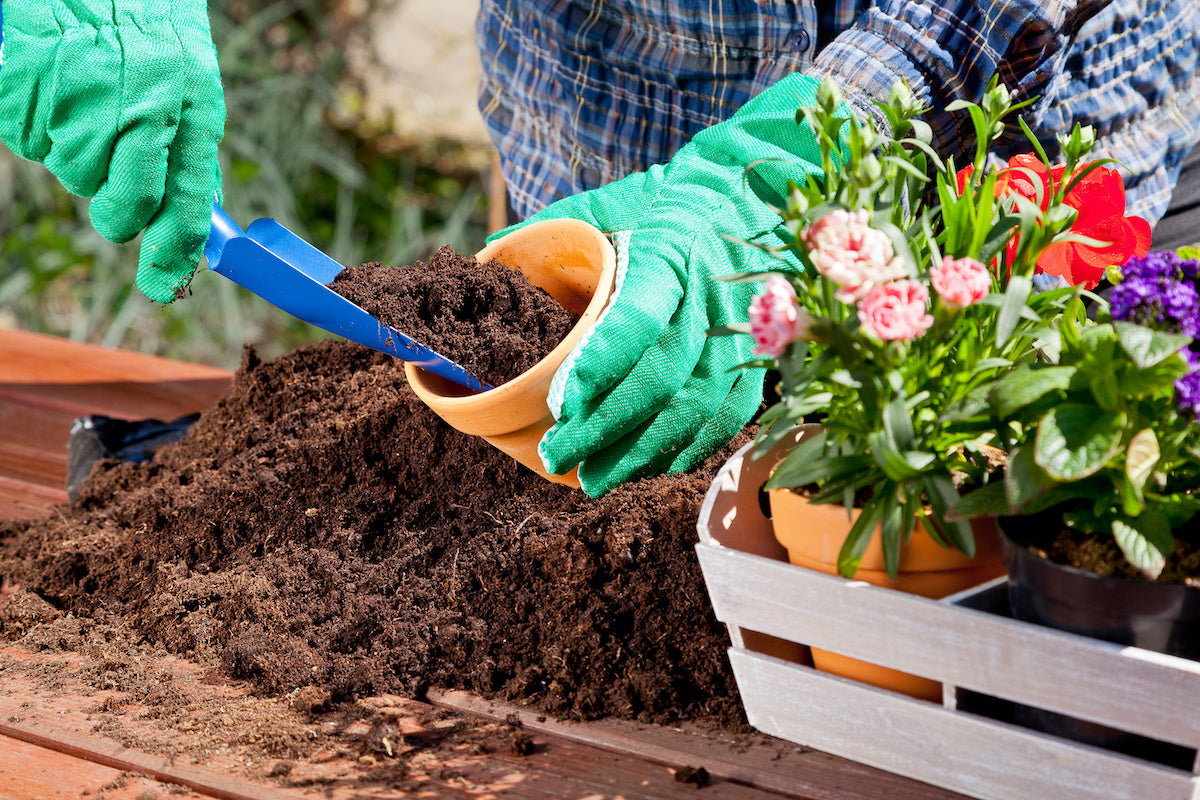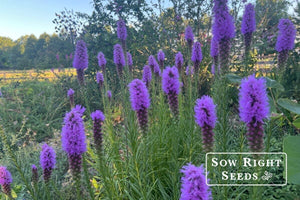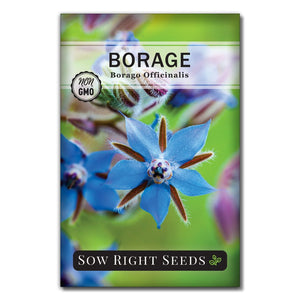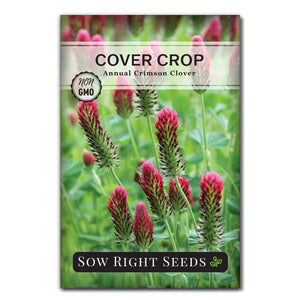How to Make Your Own Soil Mixes for Seed Starting and Garden Growing
Improving soilSeed starting mix vs potting soil vs garden soil. When do you use what? Isn't dirt just dirt? We'll explain what to use, when, and why so you can get your garden seeds off to a great start.

Quick Links
Creating Your Own Soil Mixes
You can purchase seed starting mix, potting soil, and garden soil at most nursery or garden supply stores. You can also make your own. Once you know what the different ingredients are and what they do, you’ll have a better idea of what to use for seed starting versus in your vegetable garden. And you'll know what you should add to amend your garden soil.
Seed Starting Mix Vs. Potting Soil
When do you use seed starting mix, and when do you use potting soil? Is there a difference?
There is a difference between seed starting mix and potting soil. And you will use them for different purposes.
Seed starting mix, as its name implies, is for starting seeds. It has a much finer texture, which helps hold water without large particles impeding the tender sprouting of seeds. Seed-starting mixes are often made from peat moss, perlite, coconut fiber, and vermiculite. These ingredients and the loose texture encourage germination.
Potting soil has a much coarser texture. It contains mainly compost, which provides a lot of nutrition to help plants grow. Potting soil is used for seedlings and plants. Peat moss or perlite are often added to lighten up the mix.
So which is better? Experienced gardeners use both. Seed-starting mix is perfect for germination. However, potting soil is too heavy for a seed to push its way up. However, once a seed is up and growing, it needs nutrients. Unfortunately, seed starting mix has very little. That’s why we recommend transplanting into potting soil after the seedlings have at least two true leaves.

Potting Soil Recipes
Patty’s simple seed starting mix:
4 parts peat moss
1 vermiculite
Mix them together and screen them well. This creates a fine texture that is key to helping little seeds sprout.
Daryl’s recipe for garden soil:
45% Peat moss
45% Compost
10% Vermiculite
Stir these together and add a slow-release fertilizer.
In an ideal world, everything would grow in whatever soil we happen to have in our backyard. But ideal garden conditions don’t just happen. It takes some mixing and adding of important ingredients to create the right soil for herbs, flowers, and vegetables. So, while we can’t just throw seeds out and expect them to grow, with a little bit of soil knowledge, we can improve the soil we do have. Knowing the basic amendments that can be added and understanding their contributions can help you create your own soil mixes.
Quick Overview of Soil Amendments
If you’ve read any gardening book or blog, you’ve read about things you could be adding to your soil to address moisture, drainage, and other issues. This list of soil amendments will give you a quick overview of what each addition can do. And remember to wear a dust mask and gloves when working with these ingredients.
Coconut coir
Coconut coir comes from coconut husks. This natural, renewable resource is used for absorbing moisture. It is also used to lighten the soil and add air circulation.
Peat moss
Peat moss comes from peat bogs. It is used to absorb moisture. Peat moss has a pH of around 4.5 and can be too acidic to use by itself.
Perlite
Perlite comes from heated volcanic rock. It is a granular material that is added for drainage.
Vermiculite
Vermiculite comes from heated mica and is used for drainage. Coarse grades of vermiculite drain quicker than more finely crushed grades. Vermiculite holds more nutrients and water than perlite.
Sand
Sand can come in different grades. Usually, gardeners will use coarse sand for drainage. Builders grade sand will provide aeration. Sand is heavier than perlite and vermiculite, so that’s something to consider when adding to containers.
Lime
Lime that is used in gardening is labeled “garden lime.” Lime raises the pH level and makes soil less acidic. The best time to add lime is in the fall, so it has time to be absorbed and change the pH level.
Bone meal
Bone meal is made from dried animal bones. The ground-up bones add calcium and phosphorus. Bone meal breaks down slowly in the soil, so it doesn’t have to be added often. Only add bone meal to acidic soils, as it won’t work with a pH above 7. Gardeners use bone meal to increase the amount of phosphorus available to plants. NPK of 3-15-0. One thing to note is that adding bone meal can increase your dog’s desire to dig in the garden.
Blood meal
Blood meal is from dried slaughterhouse waste. It is a natural source of nitrogen with an NPK of 12-0-0. Adding blood meal to the soil makes nitrogen available to plants for 2 to 6 weeks.
Worm castings/vermicast
Vermicast or worm castings are earthworm excrement or worm poop. Worm castings are an excellent organic fertilizer. It has a neutral pH, and nutrients and minerals are readily available for plant use.
Compost
Compost is a rich, nutrient-dense soil amendment made from decomposed natural materials. Compost can be made from your own kitchen scraps and yard waste. Usually, you want to add compost that is completely broken down. Read more about composting in our Planter’s Library.
Manure
Animal manure is a source of the main elements needed for plant growth, nitrogen, phosphorus, and potassium. Manure can improve soil structure and add slowly released nutrients. Fresh manure should not be used on vegetables, especially root vegetables.

Soil Mix FAQs
What's the difference potting soil vs garden soil ?
Potting soil is made to be lightweight and drain well for use in containers. Garden soil can refer to inground soil as well as bagged soil. It is heavier and used for general gardening.
Can I use garden soil to start my seeds?
You can use garden soil to start seeds. However, if you are starting seeds indoors, there is more chance of pathogens that can lead to damping off. If your garden soil has large clumps of organic material, you can screen it to create finer soil for seed starting.
Can you mix seed starting mix and potting soil together?
You can always mix soils together. Just know what you're mixing and why.
As you can see, there’s no one perfect soil mix that will be optimal for all plants. But now that you know the difference between perlite and sand, peat moss and compost, you can create your own potting and seed-starting mixes. Then, once your peppers and tomatoes are growing, you’ll have a better idea of what amendments could be added to create the ideal growing environment.









Thank you for the information
It was very informative and helpful
to me
This was very informative. Thank you.
Leave a comment